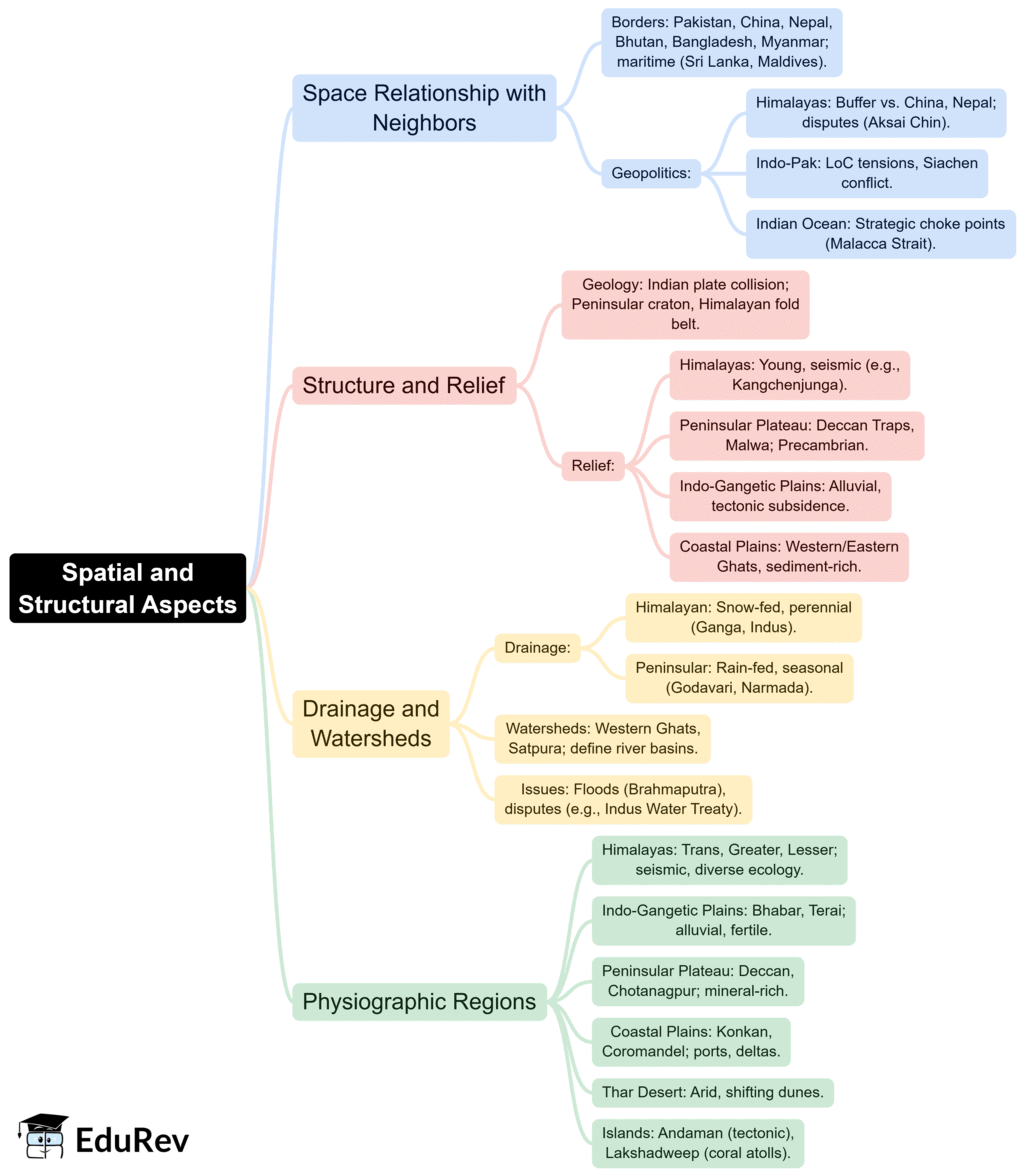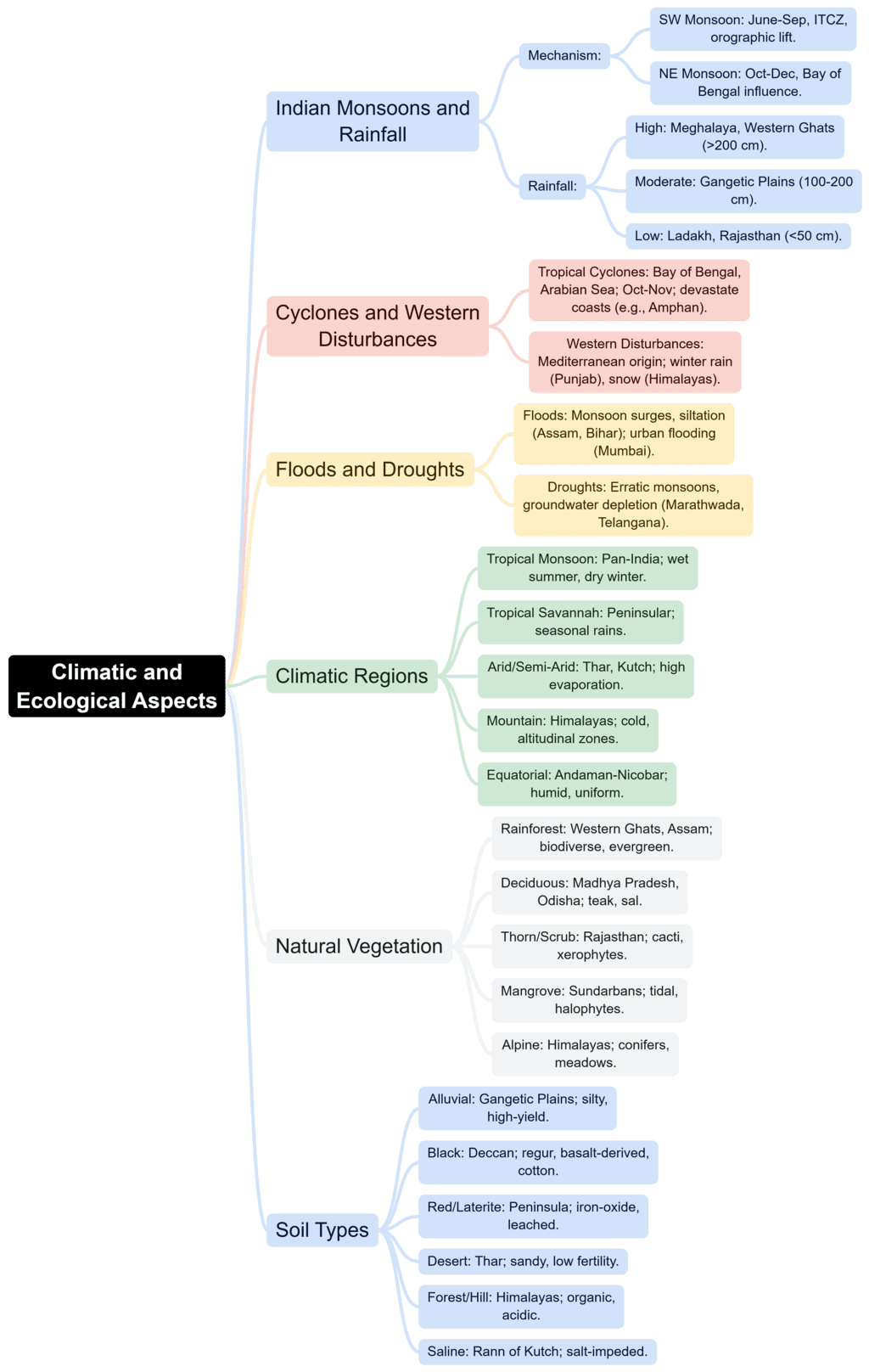UPSC Exam > UPSC Notes > Geography for UPSC CSE > Mind Map : Physical Setting
Mind Map : Physical Setting | Geography for UPSC CSE PDF Download


The document Mind Map : Physical Setting | Geography for UPSC CSE is a part of the UPSC Course Geography for UPSC CSE.
All you need of UPSC at this link: UPSC
|
175 videos|619 docs|192 tests
|
FAQs on Mind Map : Physical Setting - Geography for UPSC CSE
| 1. What is the importance of the physical setting in the UPSC exam preparation? |  |
Ans. The physical setting in UPSC exam preparation refers to the environment where candidates study and revise their materials. A conducive physical setting, such as a quiet and organized study space, can greatly enhance focus and productivity. It helps reduce distractions and allows for better retention of information, which is crucial given the vast syllabus of the UPSC exam.
| 2. How can candidates create an effective physical study environment for UPSC preparation? |  |
Ans. Candidates can create an effective physical study environment by ensuring good lighting, comfortable seating, and minimal distractions. Keeping the study area organized and clutter-free also helps. Incorporating tools like charts, maps, and visual aids related to the UPSC syllabus can enhance learning. Regularly taking breaks and maintaining a healthy routine further contribute to an effective study environment.
| 3. What role does the physical geography of India play in the UPSC syllabus? |  |
Ans. The physical geography of India is a significant component of the UPSC syllabus, particularly in the General Studies papers. Understanding India's diverse physical features, such as mountains, rivers, climate zones, and soil types, is essential for answering questions related to environmental issues, disaster management, and development planning. Candidates are often required to analyze how these physical aspects impact socio-economic conditions.
| 4. How can maps and diagrams be utilized effectively in UPSC preparation? |  |
Ans. Maps and diagrams are crucial tools in UPSC preparation as they help visualize complex geographical concepts. Candidates should practice using maps to locate important physical features and understand their significance. Creating their own diagrams to summarize topics can also aid memory retention. Regular revision of maps enhances spatial awareness, which is beneficial for both prelims and mains examinations.
| 5. What are some common pitfalls to avoid when studying physical geography for UPSC? |  |
Ans. Common pitfalls include rote memorization without understanding, neglecting the interconnections between physical and human geography, and failing to stay updated with current events related to geography. Candidates should avoid cramming and instead focus on conceptual clarity. Regular practice through mock tests and previous years' papers can help identify weak areas and improve overall performance in this segment of the exam.
Related Searches



















